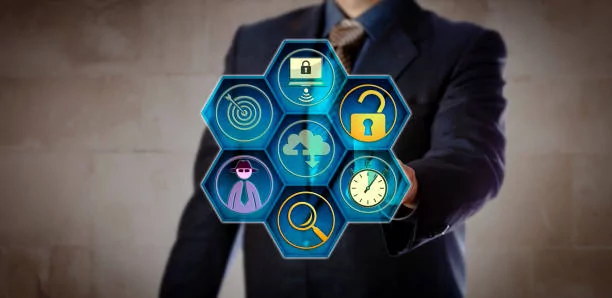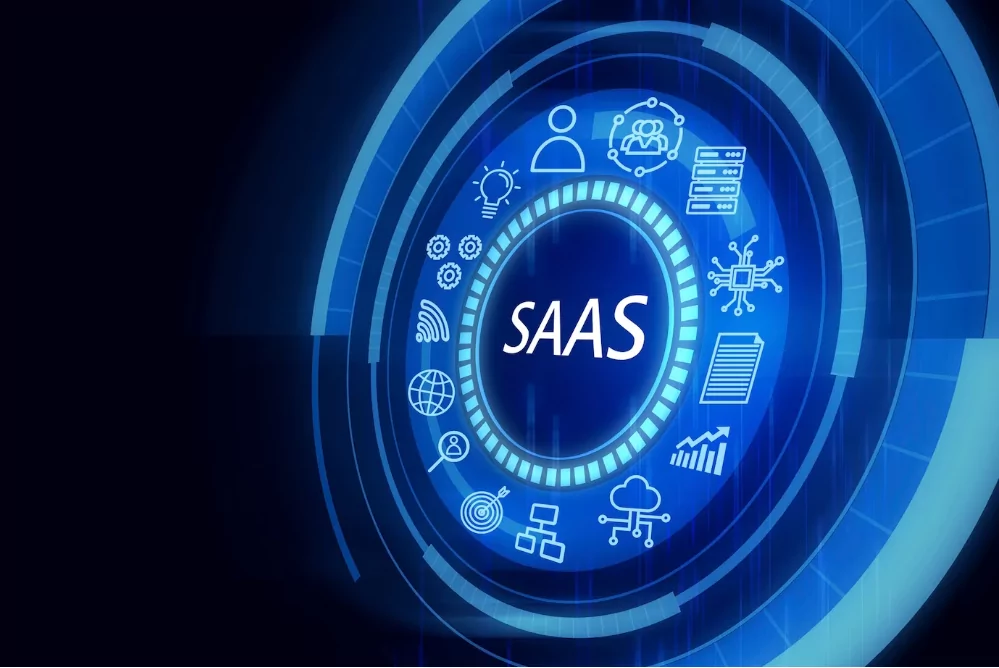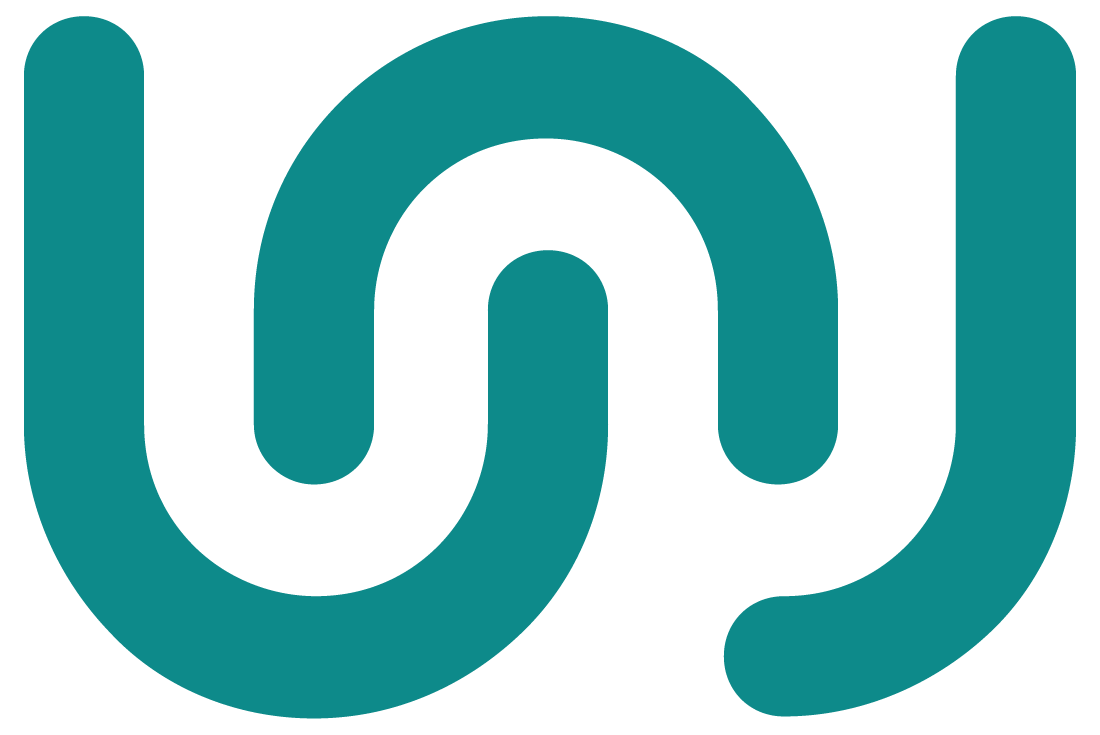Small and medium businesses typically lack the budget for robust cybersecurity measures, making them easy targets of cybersecurity attacks. In fact, a Verizon report reveals that 43% of cyberattacks specifically target small businesses. The consequences of a data breach can be fatal to these small businesses. The average cost of a data breach for companies with fewer than five hundred employees is $2.98 million.
The COVID-19 pandemic has only exacerbated the problem, resulting in a staggering 300% increase in cybercrime. Given these threats, entrepreneurs cannot afford to overlook the need for robust Software as a Service (SaaS) security measures. To this end, this guide comprehensively covers common threats, best practices for securing SaaS applications, and how to respond effectively in the event of a data breach. Dive in, and take the first step toward protecting your business from potential security risks.
What Is SaaS?
If you own a small business, chances are you rely on a SaaS application to manage the majority or certain aspects of your enterprise. SaaS applications refer to software that can be rented over the Internet. Instead of downloading the software and installing it on a device, SaaS apps such as Zoom, Shopify, and Trello can be used and accessed anywhere using any internet browser. Businesses typically pay for SaaS using a subscription model.
There are many types of SaaS applications, each designed to meet specific business needs. The most popular types include customer relationship management software, human resource management software, project management software, e-commerce, as well as marketing automation software.
Relevant SaaS Statistics
- In 2023, the SaaS market is worth $197 billion.
- 85% of business apps will be SaaS-based in 2025.
- End users have spent an average of $438K on SaaS subscriptions since 2020.
Benefits of Using SaaS for Business
The most notable benefits of using SaaS for your business include these:
- Cost. The subscription-based model allows small businesses to avoid expensive software licenses.
- Scalability. Businesses can add or remove features, depending on their needs, without the need to update their own hardware or software.
- Accessibility. SaaS tools can be accessed anywhere with an internet connection.
- Easy updates and maintenance. Businesses can forgo the need to hire someone to do the necessary software updates and maintenance
- Integration. Many SaaS apps can be connected with one another to work together seamlessly.
Cons of Using SaaS for Business
The following are the potential drawbacks of using SaaS for business.
- Internet dependency. Disruptions can easily occur because of poor internet connectivity.
- Data-transfer limitations. Switching to a new software can be difficult and time-consuming.
- Limited control and customization. Businesses will have to adapt their processes to the software’s features and functionality.
- Security and data privacy. User data and information are vulnerable to data breaches and leaks.
Relevant Cyberattack Statistics

- 45% of the data breaches are cloud-based.
- The average cost of a data breach in 2022 is $4.35 million.
- 22% of all attacks are done through phishing.
- A Yahoo! data breach affected almost a billion individuals because of access gained through identity theft.
- 19% of data breaches happen because of an untrustworthy business partner.
- 77% of companies don’t have the infrastructure or resources in place to thwart a cyberattack.
- 79% of organizations cite security as one of the main challenges they face when it comes to cloud security.
- 70% of organizations are not confident in their ability to maintain their cloud security despite having the tools.
- 69% of organizations admit to having experienced a data breach.
- 89% of businesses most affected by cloud security attacks are start-ups.
How Data Breaches Affect Your Business
The impact of a successful cyberattack on a business can be categorized into the following:
- Financial. Cost can be incurred from the theft of business information, direct theft of money, disruption to the business operation, and loss of contract. Not to mention the money needed to repair the affected systems, networks, and devices.
- Damage to reputation. Businesses are built on trust, so leaks are often fatal to the customers’ confidence in your brand. This can result in a loss of sales, a reduced number of new customers coming in, and ultimately, a cut in profits.
- Legal consequences. The business is accountable for the data it holds. Failure to do so is most likely going to result in sanctions, fines, and lawsuits from customers and other parties.
Most Common Causes of Data Breaches
A data breach happens when sensitive or confidential information is exposed to an unauthorized entity. There are many ways data breaches can happen, but the most common reasons include the following.
Insider Threats
Sometimes, employees and contractors may intentionally or unintentionally cause data breaches in a number of ways, such as accidentally attaching the wrong document in an email, losing a company device that has system access, or a disgruntled employee stealing information to exact revenge.
Weak and Stolen Passwords
Weak passwords enable hackers to use brute-force attacks to gain access to the system and steal protected information. Weak passwords include obvious ones (e.g., Password1234) and those that are guessable (e.g., [name] + [birth date]).
Unpatched Applications
Software updates are released for a variety of reasons, including patching any existing vulnerabilities in the software. When the user delays or skips updates altogether, opportunists can exploit that weakness to gain system access.
Malware
Vulnerabilities in software, such as those caused by an update failure, can make it easy for malicious individuals to introduce malware into a device. These programs are often disguised as executable files or links that the hacker can use to gain access to your system.
Social Engineering
Social engineering is a tactic used by cybercriminals that uses manipulation to trick people into divulging their credentials. These are usually done by sending malicious emails, calls, SMS, direct messages via social media, etc.
Physical Attacks
These refer to means of obtaining unauthorized access to private information using physical means, such as tampering with hardware, stealing devices, breaking and entering into a facility, and even Dumpster-diving in hopes of obtaining the required credentials.
Best Practices for SaaS Security

Use Single Sign-on (SSO) Paired with Multifactor Authentication (MFA)
An SSO system allows users to gain access to one or more applications or software using only one set of log-in credentials. SSO simplifies the sign-in process and improves security by reducing the risk of password-related security issues. Using SSO also makes it easier for security teams to manage user accounts across different apps, while simultaneously making it easier for users to remember only one set of log-in details. But more importantly, it enables easier multifactor authentication as an added layer of security.
MFA requires you to provide two or more types of identification before you can access your account. For example, you may need to enter your password and then enter a code that is sent to your phone or email to verify your identity. MFA makes it much harder for hackers to break into a user’s account, and it gives peace of mind.
Encrypt Your Data
Some vendors provide some form of data encryption, but to ensure customer data is protected, businesses should enforce their own encryption. This applies to data that is stored (at rest) and data being processed (in-flight or in motion).
Monitor and Log Usage
Monitoring data sharing can help identify any unauthorized access attempts to sensitive data and helps ensure that this is not shared with unauthorized parties or systems.
Back-Up Data Regularly, and Establish a Disaster-Recovery Plan
Having regular data backups helps prevent data loss in the case of system failures, natural disasters, and cyberattacks and ensures that the business resumes operation with minimal downtime.
Vet the Provider
Assess a provider’s security policies, protocols, and infrastructure to see if they meet your business’s needs. Verify if they are compliant with existing regulations and standards, evaluate their track record, and make sure they have robust security and privacy provisions. Even after you sign a contract with a provider, it’s important to conduct regular audits to see if they still uphold your security needs and standards.
Use a Strong Cloud Malware Scanner
Detect potential malware infections in the cloud using a reliable cloud scanning tool, especially if your business frequently uploads files to your SaaS app.
Discover and Map SaaS Data
This helps you identify which types of data are at risk of being leaked, track its movement internally and externally, and identify potential points of breach. Once these are identified, you can decide to manage access controls to these pieces of sensitive information to make sure that only authorized or a few trusted personnel have the key to them.
Use a CASB
Using a cloud access security broker (CASB) can provide an extra layer of vigilance and data protection by providing data loss prevention (DLP) capabilities that give you a more robust set of eyes to help manage security risks.
Conduct Internal Security Training
Since insider threats are one of the most common causes of data breaches, it’s important to educate employees about useful practices for ensuring your customer data and privacy are kept secure.
Developing a Data-Breach Response Plan

The best type of preparation is one that anticipates the worst. Just in case a data breach does occur, having a data breach response plan will help you implement a rapid response, minimize the impact of the damage, and identify the cause of the vulnerability as soon as possible.
A data-breach response plan is a critical document that outlines the steps an organization should take in the event of a data breach.
A strong data-breach response plan should include the following steps.
Identifying the Breach
If you have a monitoring and reporting system in place, it should be easy to identify if a breach has, indeed, occurred. Make sure an automated notification system is in place for data-breach emergencies.
Containing the Breach
Once a breach has been identified, the next step is to contain it to prevent further damage. This may involve isolating the affected system, shutting down the affected services, or disabling those accounts that have been compromised.
Assessing the Damage
Evaluate the extent of the damage. This involves analyzing your system logs, reviewing user activities, and other measures.
Notifying Affected Parties
Inform affected persons that a breach has occurred and what its extent is, and include a message about what measures are being taken about it. Publish a notice on your business’s main site and social media channels, and notify the pertinent regulatory authorities.
Conducting an Investigation
After containing the breach and evaluating the extent of the damage, carry out an inquiry to pinpoint the root cause of the breach and uncover any vulnerabilities in your business’s security measures.
Implementing Remediation Measures
Based on the findings of the investigation, remediation measures should be implemented to prevent the same thing from happening in the future. This may involve patching system vulnerabilities, making changes in permissions, revising security procedures, and improving security controls.
Evaluating the Response Plan
Assessing the effectiveness of your response plan helps identify areas for improvement to streamline the process in case a similar incident occurs in the future. Conduct a post-incident audit, analyze the response made, and get feedback from your team and other stakeholders.
Tools and Technologies for SaaS Security
Tools and technologies that can help enhance the security of SaaS applications and therefore strengthen your protection against potential security threats will always be a good use of capital. Here’s a brief list of the most critical SaaS security tools out there today.
Security Information and Event Management (SIEM) Solutions
If you want to identify potential threats before they disrupt business, a SIEM is what you need. This security solution provides real-time tracking, monitoring, and analysis of relevant security data both for auditing and compliance purposes.
Identity and Access Management (IAM) Solutions
IAM solutions help verify and manage user identity, detect suspicious activities, and report incidents across public and private cloud environments and third-party software. Key IAM features include single sign-on (SSO), adaptive multifactor authentication, and user provisioning and life-cycle management.
Data Loss Prevention (DLP) Solutions
DLP solutions involve monitoring data as it is in transit or stored and then taking action to prevent unauthorized access or use of that data. DLP solutions may include data-encryption tools, access controls, and data classification, as well as monitoring and reporting tools to identify potential security incidents.
SaaS Security Compliance and Regulations
If you handle customer user data, you, as the business, are held responsible for keeping that data safe. Certain laws are in place to make sure SaaS products are compliant with standards set by the industry. These laws help guide businesses in keeping their customers and their businesses safe.
Among the key regulatory requirements related to SaaS security are the following.
General Data Protection Regulation (GDPR)
This law encompasses the whole European Union and sets the rules for how user data is to be collected, processed, and protected. Any SaaS provider that serves European citizens or operates within the EU’s jurisdiction is compelled to comply with its requirements. Read here to learn more about the key points of the GDPR.
Health Insurance Portability and Accountability Act of 1996 (HIPAA)
HIPAA is a law encompassing the United States of America, and it governs the security and privacy of protected health information (PHI). Thus, SaaS providers that handle PHI are subject to strict HIPAA rules. Visit the CDC for a more detailed view of HIPAA.
Payment Card Industry Data Security Standard (PCI DSS)
The PCI DSS is a set of security standards dictating the proper handling of credit cards to ensure that the cardholder’s data is adequately protected. Every company that accepts, processes, stores, and transmits credit card information is subject to the PCI DSS. Click here to learn more about it.
Conclusion
If you’re using or considering SaaS for your business, you must also consider the risks that come with the convenience. Having a thorough understanding of these risks will help you establish a robust protection plan that will safeguard your customers’ data and privacy and your business’s profit and reputation in the digital age.
References:
- Admin. 2018. “7 Major Causes of a Data Breach.” https://ifflab.org/7-major-causes-of-a-data-breach/
- CDC. n. d. “Health Insurance Portability and Accountability Act of 1996 (HIPAA).” https://www.cdc.gov/phlp/publications/topic/hipaa.html
- Chauhan, S. 2015. Online Security. Elsevier eBooks. https://doi.org/10.1016/b978-0-12-801867-5.00011-2
- Clarip. n. d. “The 10 Key Requirements of the GDPR.” https://www.clarip.com/blog/gdpr-key-requirements/
- CyberArk Software. 2021. “What Is IAM? Identity and Access Management Definition.” https://www.cyberark.com/what-is/iam/#:~:text=IT%20and%20security%20organizations%20use,reasons%2C%20at%20the%20right%20time
- EasyDmarc. 2022. “8 Most Common Causes of a Data Breach.” https://securityboulevard.com/2022/07/8-most-common-causes-of-a-data-breach/
- Halperin, A. 2023. “Worried About a Cyberattack? What It Could Cost Your Small Business.” Business News Daily, February 22, 2023. https://www.businessnewsdaily.com/8475-cost-of-cyberattack.html
- IBM. n. d. “What Is Security Information and Event Management (SIEM)?” https://www.ibm.com/topics/siem#:~:text=SIEM%20solutions%20allow%20organizations%20to,implement%20more%20effective%20security%20processes
- International Federation of Accountants. 2019. “Cybersecurity Is Critical for All Organizations—Large and Small.” https://www.ifac.org/knowledge-gateway/preparing-future-ready-professionals/discussion/cybersecurity-critical-all-organizations-large-and-small
- Irwin, L. 2022. “The 5 Most Common Causes of Data Breaches.” https://www.itgovernance.eu/blog/en/the-most-common-causes-of-data-breaches-and-how-you-can-spot-them
- James, N. 2023. “AWS Penetration Testing Report: Everything You Should Know!” Astra Security Blog. https://www.getastra.com/blog/security-audit/data-breach-statistics/
- NI Business Info. n. d. “Impact of Cyber Attack on Your Business.” https://www.nibusinessinfo.co.uk/content/impact-cyber-attack-your-business
- PCI Compliance Guide. 2017. “PCI Compliance Guide Frequently Asked Questions.” https://www.pcicomplianceguide.org/faq/#2
- Resmo. n. d. “40+ Cloud Security Statistics You Need to Know in 2023.” https://www.resmo.com/blog/cloud-security-statistics
- Statista. 2023. “SaaS Market Size Worldwide 2024.” https://www.statista.com/statistics/505243/worldwide-software-as-a-service-revenue/#:~:text=In%202023%2C%20the%20software%20as,as%20through%20a%20web%20interface.
- Sutcliffe, A. 2018. “8 Most Common Causes of Data Breach.” https://www.sutcliffeinsurance.co.uk/news/8-most-common-causes-of-data-breach/
- Verizon Business. n. d. 2022 Data Breach Investigations Report. https://www.verizon.com/business/resources/reports/dbir/?AID=13568831&vendorid=CJM&PUBID=3953920&cjevent=27961a97e4b911eb801d3f6b0a1c0e10&CMP=afc_m_p_cj_na_ot_21_99_affiliate-3953920_13568831&cjdata=MXxOfDB8WXww
- Western Governors University. 2021. “6 Industries Most Vulnerable to Cyber Attacks.” https://www.wgu.edu/blog/6-industries-most-vulnerable-cyber-attacks2108.html#openSubscriberModal
- Wolford, B. (2022). What is GDPR, the EU’s new data protection law? GDPR.eu. https://gdpr.eu/what-is-gdpr/



